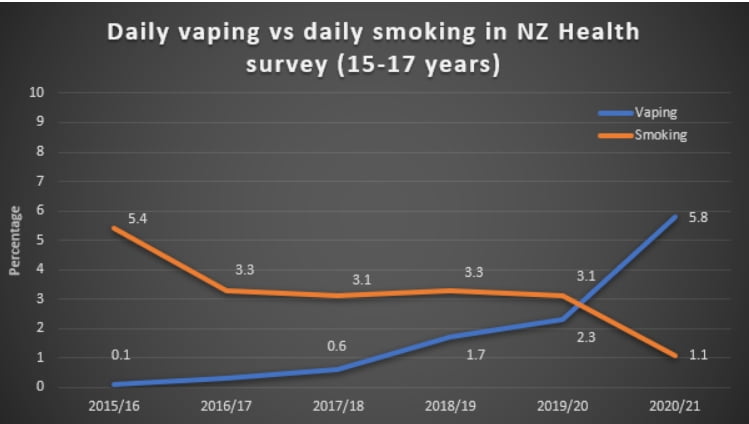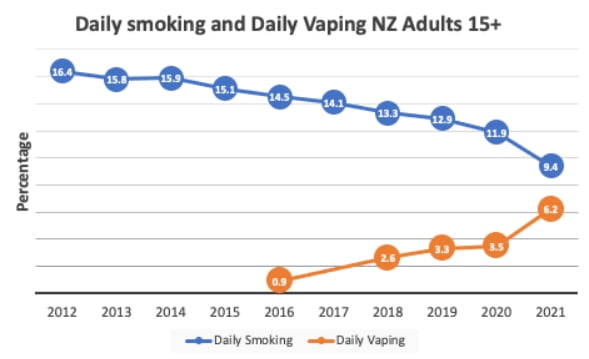Could a five-million inhabitants island, with an already extremely low incidence of smokers among its population, set an example to the rest of the world in curbing the tobacco epidemic? Looking at the results and the data provided by New Zealand’s health authorities, the answer is YES.
While the World Health Organization postponed discussions on e-cigarettes, thanks to New Zealand, 2022 could become a cornerstone for a global implementation of Tobacco Harm Reduction.
The introduction into the market of e-cigarettes in the mid-2000s sparked anger and raised concerns about a potential reversal in the global progress of tobacco control policies. Consequently, health authorities have warned for years that easing rules on these products would provoke a spike in the number of smokers among young adults and challenged the veracity of the increasing number of scientific studies, which demonstrated improved health outcomes with the use of alternative combustion-free products.
However, vaping appears to be associated with a steep decline in cigarette use, including in the UK, US and Canada. As experts have noted, vaping among the population may well have contributed to a decline rather than an increase in the smoking rate. The panic caused by predictions of e-cigarettes increasing combustible cigarette uptake has proven to be wrong.
While Canada and the United States continue to ignore this evidence, another country has taken the lead in translating theory into practice. In line with the recent decision by UK’s government to allow e-cigarette as a prescription for smoking cessation – New Zealand established a groundbreaking approach allowing e-cigarettes as a smoking cessation aid.
The Smoke-free Environments and Regulated Products (Vaping) Amendment Act 2020 is one of the most comprehensive regulations on vaping and related products worldwide. Its goal is to protect youngsters from smoking while providing a less harmful alternative to smokers who want to quit.
Responding to the call from the public and researchers for a more sustainable anti-tobacco national policy, the Ministry of Health of New Zealand recently established a Technical Expert Advisory Group on Electronic Cigarette Product Safety to provide the government with all the scientific evidence available on vaping product safety standards. In the first decision of its kind, the advisory group also included representatives from NZ vaping industry.
The evidence provided by the Committee persuaded the government to embrace e-cigarettes to further the goal of a free-smoke NZ by 2025.
In the last two years, NZ has become a convincing example of the effectiveness of smoke-free devices in minimizing the number of smokers of deadly cigarettes while using e-cigarettes as a cessation tool.

“What we are witnessing is an amazing result despite all the scaremongering by international regulatory bodies and philanthropists’ private funds. The goal of ending tobacco cigarette use among youth is not an impossible result. Data in New Zealand (but also in the UK, US and Canada) show that this goal is reachable and in a short time,” said Prof. Riccardo Polosa.

“Concerns that e-cigarettes may act as a `gateway’ to conventional cigarettes have not materialized, not even when baseline smoking prevalence is very low as in New Zealand,” Prof. Polosa added.
The experience of New Zealand, with its low rate of smokers, presents a clear indication that a mix of less-harmful alternative tools to conventional cigarettes, along with awareness campaigns about the risk of smoking, could achieve the goal of curbing the tobacco epidemic, which could be effective worldwide.
Governments in many countries are increasingly considering THR as an effective tool to restrain the domestic smoking rate and minimize the burden of smoking-related illness on national health systems. The successful approach by New Zealand represents the unbiased acceptance of the potential health benefits from vaping and opens up a new pathway for the advancement of Tobacco Harm Reduction in other nations.





